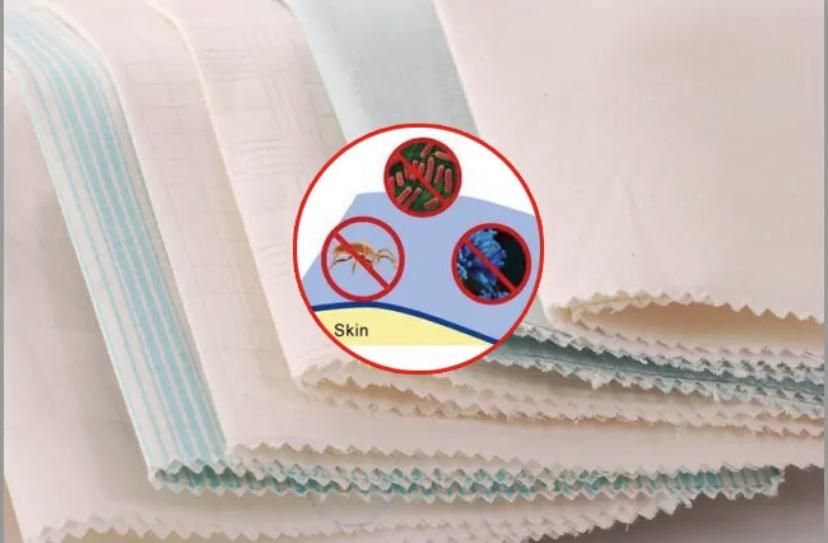
Principle of Antimicrobial Fabric:
Antimicrobial fabric also known as: “Antimicrobial Fabric”, “Anti-odor Fabric”, “Anti-mite Fabric”. Antibacterial fabrics have good safety, it can effectively remove bacteria, fungi and mold on fabrics, keep fabrics clean, and prevent bacteria from regenerating and breeding. Antimicrobial fabric injection dyeing polyester and nylon fibers inside at high temperature, antibacterial fabric injection is fixed in the fiber inside and protected by the fiber, so it has wash resistance and reliable broad-spectrum antibacterial effect. The antibacterial principle is to destroy the cell wall of bacteria, because the intracellular osmotic pressure is 20-30 times the extracellular osmotic pressure, so the cell membrane rupture, cytoplasmic material leakage, which also terminates the metabolic process of microorganisms, so that microorganisms can not grow and reproduce.
The Role of Antibacterial Fabric:
Antibacterial fabrics have the features of antimicrobial sterilization, anti-mold and anti-odor, high-strength moisture absorption, breathability and perspiration, skin-friendly, anti-ultraviolet rays, anti-static, elimination of heavy metals, elimination of formaldehyde, aromatic ammonia and so on.
With an antibacterial rate of 99.9% or more, antibacterial fabrics strongly and rapidly inhibit the growth and reproduction of various types of bacteria and fungi that are harmful to the human body. Antibacterial fabrics are suitable for cotton, blended fabrics, leather and other types of fabrics. It can give the fabric for backpack effective antibacterial deodorization and washing resistance, and does not change color after more than 30 times of washing. It᾽s a new backpack trend.
Uses of Antibacterial Fabric:
Antibacterial fabrics are suitable for making underwear, casual wear, towels, socks, work clothes, kids school backpack and other apparel, home textiles and medical textiles.
The Meaning and Purpose of Antibacterial Fabrics:
(1) Meaning
Sterilization: The effect of killing microbial nutrients and propagules is called sterilization.
Bacteriostatic: The effect of preventing or inhibiting the growth and reproduction of microorganisms is called bacteriostatic.
Antimicrobial: The sum of bacteriostatic and sterilization effects is called antimicrobial.
(2) Purpose
Textile fabrics composed of fibers, due to their porous object shape and polymer chemical structure conducive to microbial attachment, become a good host for microbial survival and reproduction. In addition to harming the human body, the bacteria will also contaminate the fiber, so the main purpose of using antimicrobial fabrics is to eliminate these adverse effects.
Antimicrobial performance tests and standards:
Polyester antimicrobial fabrics and nylon antimicrobial fabrics have a special quality test index, that is, antimicrobial potency. Regarding the determination of antimicrobial potency, scholars at home and abroad have proposed a variety of evaluation experimental method, but there are some shortcomings, and the scope of application has certain limitations. Antimicrobial agent can be broadly divided into dissolution type (antimicrobial agent on the fabric can be slowly dissolved in water) and non-dissolution type (antimicrobial agent and fiber combination, can not be dissolved) , according to the representative antimicrobial performance test methods: GB15979-2002 Disposable Sanitary Products Hygiene Standards, also known as the “oscillating flask method”. This method is applicable to textiles produced with non-soluble antimicrobial agents. This test measures the antimicrobial rate of antimicrobial polyester fabrics.
Post time: Nov-03-2023
